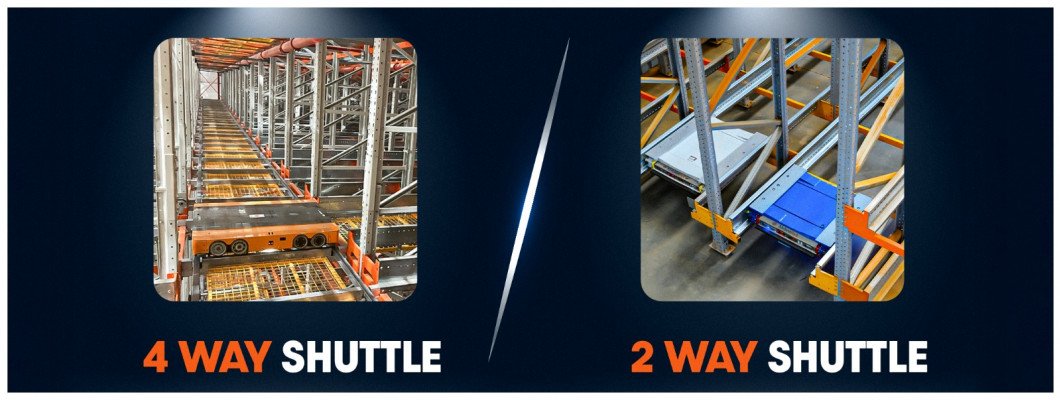
Automated shuttle systems have become a cornerstone of modern warehouses and storage facilities, offering speed, flexibility, and efficiency in handling goods. Among the most common are two-way shuttles and four-way shuttles. While both serve the purpose of automating pallet or tote movement within racks, they differ significantly in their design, capabilities, and ideal applications.
What Are Shuttle Machines?
Shuttle machines are robotic carriers that move goods within racking systems. They typically run on rails and are used in Automated Storages for high-density warehouses. By minimizing manual handling and optimizing space usage, shuttles increase throughput and reduce operational costs.
Two-Way Shuttle Machines
Definition:
- Two-way shuttles can move forward and backward along a single axis (usually the length of the storage lane).
Key Characteristics:
- Movement: Limited to one dimension (X-axis).
- Infrastructure Needs: Each lane requires a shuttle or a shuttle relocation mechanism.
- System Design: Best suited for deep-lane storage, where goods move in and out of the same direction.
- Cost: Lower upfront investment compared to four-way shuttles.
- Maintenance: Simpler design, generally lower maintenance requirements.
Ideal Use Cases:
- Cold storage facilities (deep-lane pallet storage).
- FIFO/LIFO operations where lane depth is more important than flexibility.
- Warehouses prioritizing cost efficiency over adaptability.
Four-Way Shuttle Machines
Definition:
Four-way shuttles can move forward, backward, left, and right, enabling movement across both the X- and Y-axes within the rack system.
Key Characteristics:
- Movement: Full two-dimensional mobility across the racking grid.
- Infrastructure Needs: No need for a dedicated shuttle in each lane; a fleet of shuttles can service multiple aisles.
- System Design: Provides higher flexibility and scalability, especially in large and complex warehouses.
- Cost: Higher upfront cost due to advanced design and control systems.
- Maintenance: More complex structure, potentially higher maintenance effort.
Ideal Use Cases:
- E-commerce fulfillment centers requiring high throughput and fast SKU access.
- Dynamic warehouses with frequent product turnover.
- Operations needing modular expansion without major system redesign.
Key Differences at a Glance
| Feature | Two-Way Shuttle | Four-Way Shuttle |
| Movement | One direction (X-axis) | Multi-directional (X- and Y-axes) |
| Flexibility | Low | High |
| System Complexity | Simple | Complex |
| Scalability | Limited | Highly scalable |
| Cost | Lower | Higher |
| Best For | Deep-lane storage, cold storage | E-commerce, dynamic SKU environments |
Choosing Between the Two
The choice between a two-way and four-way shuttle depends largely on warehouse strategy, product mix, and operational goals:
- If your business values low cost, deep storage, and simple FIFO/LIFO flows, a two-way shuttle system may be the right fit.
- If your operations demand high throughput, flexibility, and future scalability, then investing in four-way shuttles offers long-term benefits.
✅ Conclusion:
Both shuttle types play critical roles in optimizing warehouse operations. Two-way shuttles emphasize simplicity and cost-effectiveness, while four-way shuttles provide versatility and scalability. The decision ultimately rests on balancing budget, storage density, and operational agility.







Leave a Comment